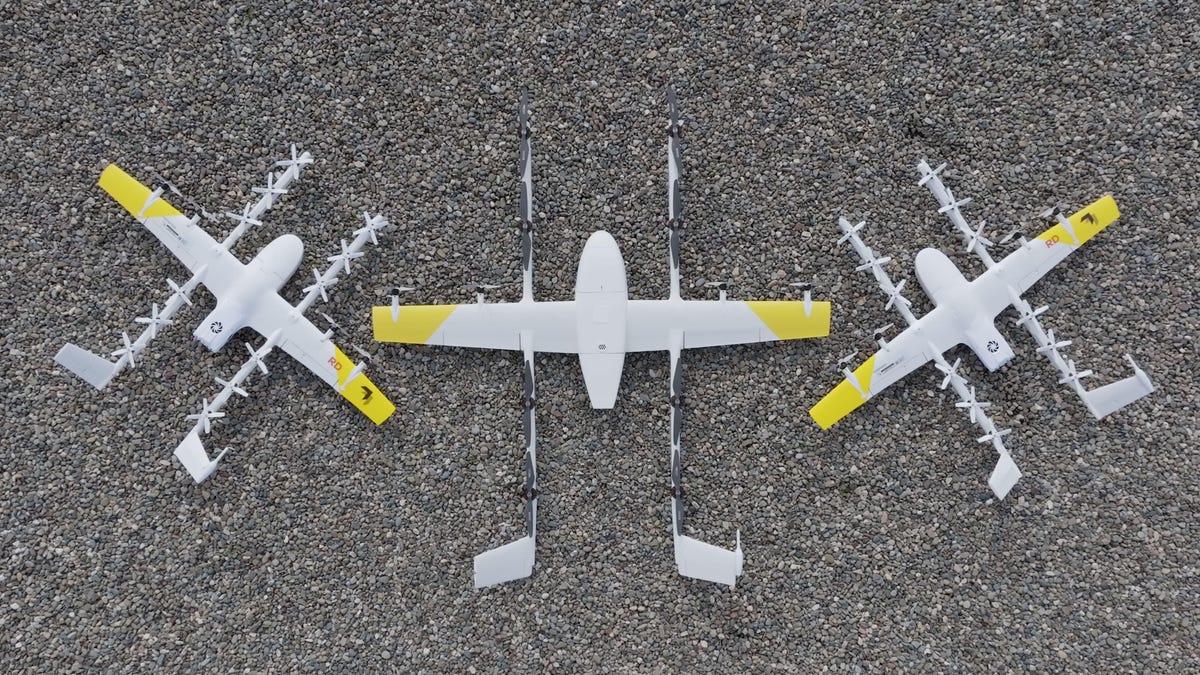Wing's Bigger New Delivery Drone Can Carry Packages Twice as Heavy
Drone delivery is becoming more mainstream, at least in some pockets of the world.

Wing's bigger new drone, center, can carry 5-pound packages up to 12 miles. That's double the payload weight of its earlier, smaller drones, shown here flanking new model.
Alphabet subsidiary Wing on Wednesday revealed a bigger new drone model that can carry 5-pound packages, double the weight of its first model. The company will obtain approval from the Federal Aviation Administration to fly the drone and expects to start deliveries later this year.
The move comes months after one of its top rivals, Zipline, introduced a smaller drone better suited to suburban deliveries. Both companies are leaders in the area, with Walmart selecting them for drone deliveries to millions of Texans in the Dallas-Fort Worth area.
Delivery drones are catching on as a way to fulfill our shopping needs for smaller items like over-the-counter medicines, groceries, construction supplies, meals and coffee. Those are the sort of items you might order from Amazon to arrive in the next day or two, but drones could save you a trip to the store when you need something immediately. They can potentially boost the instant gratification of placing an order if they enter widespread deployment.
These drones are faster than delivery cars and have a lower carbon footprint, and they fly high enough that most people don't notice them, drone makers say. Wing and Ziplile both use designs that lower packages on a tether.
In 2022, Wing unveiled a "library" of different drone sizes, including one a lot beefier than the new model introduced Wednesday. The idea is to cover more use cases with the same basic design: two parallel fuselage elements studded with propellers to lift the drone vertically and let it hover, a fixed wing with separate propellers for efficient horizontal flight, and a bulbous central element to house the battery and hook on a package.
Wing's first drone model serves about 70% of drone delivery needs in the US, but the bigger model should help cover the other 30% that previously require two drones to fulfill bigger orders, Wing CEO Adam Woodworth said in a blog post.
Wing's heavier-duty new drone has the same 12-mile round-trip delivery range as the previous design. It can zip along at 65mph. It fits into the same Wing network of drone delivery and charging stations designed to support large-scale use by many businesses.

